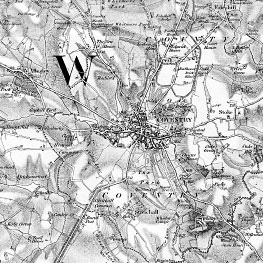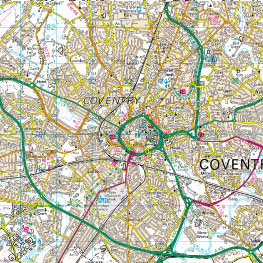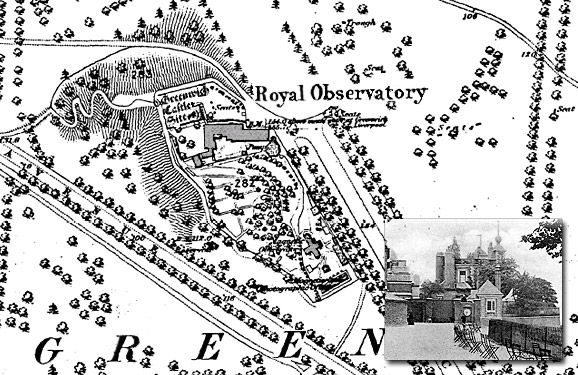Westward Ho!, Devon (MAP: OS Town Plans 1:10,000 – published in 1903)

Westward Ho! is a seaside village near Bideford in Devon, England and faces westward into Bideford Bay.
The village name comes from the title of Charles Kingsley’s novel Westward Ho! (1855), which was set in nearby Bideford. The book was a bestseller, and entrepreneurs saw the opportunity to develop tourism in the area. The first hotel built was named the Westward Ho! Hotel, and the adjacent villas were also named after the book. As further development took place, the expanding area incorporated the name of Westward Ho!
 During WWII Bailey Bridges were tested at Westward Ho! as part of the Mulberry Harbour project, as well as the The Great Panjandrum. The Panjandrum is probably best know for being depicted in the Dad’s Army episode, “Round and Round Went the Great Big Wheel”, about a large, rocket-propelled, explosive-laden wheel. Unfortunately the real wheel had as many problems as the tv version and the idea never saw service.
During WWII Bailey Bridges were tested at Westward Ho! as part of the Mulberry Harbour project, as well as the The Great Panjandrum. The Panjandrum is probably best know for being depicted in the Dad’s Army episode, “Round and Round Went the Great Big Wheel”, about a large, rocket-propelled, explosive-laden wheel. Unfortunately the real wheel had as many problems as the tv version and the idea never saw service.
Westward Ho! is also home to the Royal North Devon Golf Club, the oldest golf course in England and Wales.
The exclamation mark is obviously an intentional part of the village’s name. It is the only such place name in the British Isles, but although it may be unique in the UK Westward Ho! is out-exclaimed by Saint-Louis-du-Ha! Ha!, Quebec, which has the distinction of having two exclamation marks in its name.
Find out about the history of your area. Visit Cassini Maps











